- Compre com um especialista:
- 4004-5700 | 0800 400 0800
- 11 4004-5700
- Nossas lojas
- Entre ou cadastre-se

Cartão Pré-Pago Internacional
Solicite agora mesmo o seu Cartão Pré-Pago Internacional.
Com o Cash Passport Mastercard Platinum® você tem um cartão sem anuidade e fica livre das variações do câmbio, além de viajar com até 6 moedas estrangeiras em um único cartão internacional.
Já tem seu cartão? Recarregue agora mesmo com dólar , euro , libra , dólar canadense , australiano ou neozelandês .
Consultar o saldo e extrato ou ativar cartão recebido pelos correios

Confira benefícios do cartão pré-pago internacional:

Fique livre da variação cambial
Saiba exatamente quanto vai pagar na taxa do câmbio . Diferentemente do que acontece com o cartão de crédito, em que você só descobre quanto gastou quando chegar a fatura!

Não pague a dupla conversão!
Quando usamos o cartão de crédito em alguns países é cobrada a dupla conversão. Uma compra em euro é convertida em dólares e depois em reais. Com o cartão pré-pago internacional você já leva a moeda do país de destino!

Faça recargas mesmo fora do Brasil
Ideal para quem vai fazer intercâmbio! Quando acabar seu saldo lá no exterior basta fazer uma nova recarga pelo Aplicativo, e em menos de 24h o seu saldo estará disponível.

Aceito em toda rede Mastercard
O cartão pré-pago internacional é aceito em milhões de estabelecimentos comerciais pelo mundo.

Atendimento 24 horas
Em caso de perda ou roubo do seu cartão você conta com assistência 24 horas por dia pela Mastercard e em português para reposição de um novo cartão ou para a realização de um saque emergencial do saldo disponível.

Faça saques em caixas eletrônicos
Caso você precise de dinheiro em espécie enquanto estiver no exterior você pode recarregar seu cartão pré-pago internacional e realizar saques em caixas eletrônicos lá fora.

Faça parte do Mastercard Surpreenda
Programa de relacionamento da Mastercard. Quanto mais você utilizar seu cartão, mais pontos você ganha para resgatar benefícios em dobro: compre um e leve dois!
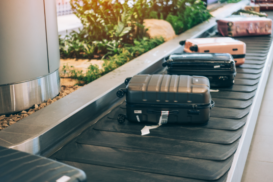
Conte com seguro bagagem
No caso de perda ou roubo de sua bagagem no exterior ou já aqui no Brasil você está protegido com o Seguro Bagagem Mastercard .

Pagamento por Aproximação
Realize seus pagamentos de até 30 dólares ou valores equivalentes utilizando a Tecnologia Contactless em milhões de estabelecimentos pelo mundo.

Pague transporte público
Em Nova York, Miami, Londres e outras cidades o Cash Passport Mastercard Platinum já é aceito como forma de pagamento em metrôs e ônibus, apenas usando a aproximação.
1 O cartão Cash Passaport é emitido pela Travelex Card Services Limited, de acordo com a licença da Mastercard International Inc. Consulte as condições de cada produto aqui.
2 A Mastercard é uma marca registrada e o design dos círculos é uma marca registrada da Mastercard International Incorporated.
Como recarregar seu cartão pré-pago internacional? Veja o passo a passo:
Use nosso simulador para verificar o valor em reais que você pagará.
Se for sua primeira carga, será necessário ativar seu cartão.
Faça o pagamento por transferência, boleto ou pix.
Em até 24 horas o saldo estará disponível no seu cartão pré-pago internacional!
Nossos clientes confiam:
Já utilizei o cartão pré-pago da Confidence com diferentes moedas, nunca tive problemas para usá-lo no exterior. Também já esqueci a senha e consegui recuperar facilmente com o serviço de atendimento.
Cartão prático e fácil de usar. Ideal para viagens ao exterior. Simples na visualização do saldo e em países em que existe retorno do imposto, o crédito é muito rápido.
Já usei em duas viagens internacionais e gostei da praticidade! Muito bem aceito!
Cartão personalizado, com nome, seguro pois possui chip e senha de segurança, bandeira Mastercard aceita no mundo inteiro. Excelente.
Tudo ocorreu perfeito e o chat é bem rápido e simples para dúvidas.
Procuro um cartão pré pago que realmente faça a diferença no meu bolso, através de diversas pesquisas notei que essa empresa é uma das preferidas dos viajantes.
Fácil utilização, seguro e ampla aceitação no comércio e estabelecimentos internacionais.
Rapidez, segurança, e ótimo atendimento.
Minhas experiências com o cartão pré pago foram excelentes.
Precisei recarregar frequentemente quando me mudei para Irlanda e nunca tive problemas.
Tem um amigo que vai fazer uma viagem internacional ou intercâmbio?
Compre onde você preferir.
Confira todos os nossos canais de venda e atendimento:
- Loja Online
- Nossas Lojas
- Chat Online
Veja mais informações sobre o cartão pré-pago internacional:

Voltou de viagem com saldo no cartão pré-pago internacional?
Não se preocupe. Você pode realizar a retirada do saldo em qualquer uma de nossas lojas ou entrando em contato com nossos especialistas na Central de Atendimento (0800 400 0800), por chat, e-mail ou telefone. O saldo pode ser enviado em reais direto para sua conta bancária.

Você tem um cartão Multi Moeda Cash Passport?
Se você já tem um cartão Multi Moeda Cash Passport fique tranquilo. Seu cartão permanecerá válido até a data de expiração. Confira a data na frente do seu cartão.

Cuidado com a Taxa de Inatividade!
Faça pagamentos e recargas com frequência para o seu saldo não ser descontado. Existe uma taxa de inatividade caso você não movimente o seu cartão durante 6 meses.

Evite usar como garantias.
Evite utilizar o cartão pré-pago internacional como caução em hotéis e locadoras de veículos, pois o seu saldo fica bloqueado até a liberação do valor do estorno.

Use apenas no exterior.
A utilização do cartão pré-pago internacional em território nacional não é permitida e pode causar seu bloqueio.

Cuidado com a conversão!
Ao utilizar seu cartão pré-pago internacional, para saques ou em pagamentos em estabelecimentos, ao aceitar a conversão para a moeda local podem ser aplicadas tarifas pela administradora do cartão.
Dúvidas frequentes:
Você pode consultar o saldo e extrato do seu cartão pré-pago internacional em nossa Loja Online ou Aplicativo acessando o menu “Meus Cartões”. Para baixar o Aplicativo acesse a App Store para celulares iOS e a Play Store para celulares Android.
Você também pode clicar aqui para consultar o saldo e extrato do seu cartão pré-pago.
Sim. Em alguns países não é possível utilizar o cartão pré-pago internacional. Caso você tente utilizar o caixa eletrônico ou pagar alguma transação, ela será negada.
No momento, os países que não aceitam o cartão são: Irã, Coréia do Norte, Sudão, Síria e Criméia.
Você ainda poderá usar o cartão pré-pago internacional nesses países. Quando a moeda local não estiver disponível no cartão, a transação será debitada de umas das moedas com saldo disponível, de acordo com a ordem de prioridade predeterminada.
A ordem de prioridade de débitos em que não há a disponibilidade da moeda local sempre será: dólar americano, euro, libra esterlina, dólar canadense, dólar australiano e dólar neozelandês. Essa ordem não pode ser alterada.
Transações que necessitarem da conversão entre moedas disponíveis no cartão serão calculadas usando a taxa de câmbio diária determinada pela Mastercard somada a uma taxa de conversão. Consulte a seção de tarifas e limites na nossa Central de Ajuda .
Ao utilizar seu cartão em alguns estabelecimentos (consulte lista abaixo), você pode precisar ter um saldo disponível maior do que o valor da transação que você deseja realizar. Isto porque: (i) um estabelecimento pode submeter a transação com valor superior ao que você autorizou inicialmente para cobrir o valor da transação (por exemplo, uma refeição ou a conta de um bar), mais um adicional para gorjeta ou taxa de serviço, ou (ii) ao abastecer seu carro alugado, por exemplo, em uma bomba de combustível automatizada ou quando você usa seu cartão para pagar por serviços de telecomunicações, para garantir que haja saldo suficiente disponível para cobrir o custo final da transação.
A adição deste percentual ou valor fixo ao valor da transação autorizada pelo estabelecimento é chamado de “tolerância” e, como explicamos anteriormente, é aplicada em certas categorias de estabelecimentos. Veja quais são:
Bares (ou outros estabelecimentos de bebidas semelhantes) – 20%
Restaurantes (ou outros locais do segmento da alimentação) – 10%
Táxis e limusines – 15%
Serviços de telecomunicação –
US$ 15 ou o equivalente na moeda local
Bombas de combustível automatizadas – US$ 49 ou o equivalente na moeda local
Como um estabelecimento pode não submeter a transação com o valor final imediatamente, a tolerância (taxa extra) é aplicada para garantir que exista saldo suficiente disponível para quando o débito for realizado. O valor autorizado pelo estabelecimento mais o percentual ou valor fixo da tolerância é reservado do saldo disponível de seu cartão até que o estabelecimento liquide a conta final (ou seja, quando o pagamento for solicitado e o valor final debitado de seu cartão), que pode acontecer em até 30 dias.
Se o valor da liquidação final exceder o saldo disponível daquela moeda no seu cartão, o valor restante será pago pela conversão deste montante na ordem de prioridade das moedas disponíveis no seu cartão. Para mais informações sobre a ordem de prioridade, consulte os Termos e Condições do seu cartão Multi Moeda Cash Passport. A taxa de câmbio utilizada é determinada pela Mastercard® no dia em que a transação é processada pela própria Mastercard, e acrescido da margem de câmbio (às vezes chamada de tarifa de câmbio). Note que a taxa de câmbio utilizada no momento em que transação é autorizada (e os fundos são reservados) pode ser diferente da taxa de câmbio utilizada no momento em que a transação é liquidada, no entanto, você só será cobrado pelo valor real e final da transação que assinar ou validar por senha.
Como o estabelecimento pode não liquidar a conta final em até 7 dias e em alguns casos pode levar até 30 dias para ser liquidada (momento em que o saldo é debitado de seu cartão Multi Meda Cash Passport), recomendamos que você verifique seu histórico de transações regularmente através do “Minha conta” e, levando isso em conta, inclua o valor da tolerância para garantir que você tenha saldo disponível suficiente para seus gastos. Normalmente, o estabelecimento submete o pedido de liquidação em até 24 horas a partir do momento em que você autorizou a transação.
Se o valor da liquidação final exceder o saldo disponível da moeda estrangeira em questão no cartão, o valor restante será pago pela conversão deste montante na ordem de prioridade das moedas disponíveis no seu cartão. Para mais informações sobre a ordem de prioridade, consulte os Termos e Condições do seu cartão Multi Moeda Cash Passport. A taxa de câmbio utilizada é determinada pela Mastercard® no dia em que a transação é processada pela própria Mastercard e acrescida da margem de câmbio (às vezes chamada de tarifa de câmbio).
Se você não tiver saldo suficiente disponível somando todas as moedas de seu cartão para cobrir o valor da transação mais o valor da tolerância, sua transação poderá ser recusada.
Por exemplo, você almoçou em um restaurante e o total da conta foi de US$ 50,00. Você tem exatamente US $ 50,00 no seu cartão e há uma tolerância de 10% aplicada a esta categoria de estabelecimento. Se o restaurante tentar passar US$ 50,00 em seu cartão, a transação será declinada pois os 10% de tolerância serão adicionados ao valor da transação e portanto não haverá saldo suficiente para cobrir os US$ 55,00 (US$ 50 + 10% de tolerância – US$ 5) = $ 55,00).
Certifique-se de que você possui o valor para a tolerância disponível em seu cartão. Se você estiver em um dos tipos de estabelecimentos onde a tolerância é aplicada, você pode não ser capaz de usar o seu cartão, a menos que você tenha o valor suficiente disponível para cobrir o acréscimo da tolerância. No entanto, se o estabelecimento permitir, você pode utilizar seu cartão para realizar um pagamento parcial, e cobrir o valor restante com outro meio de pagamento. Apenas certifique-se de informar o caixa antes de realizar o pagamento e lembre-se sempre de confirmar o valor que deseja que seja deduzido do seu cartão. O caixa deve processar primeiramente o pagamento com o cartão Cash Passport, e em seguida, aceitar o restante do valor no meio de pagamento que você escolher.
Ao utilizar seu cartão onde a tolerância é aplicada, em alguns deles o seu cartão pode ser pré-autorizado pelo estabelecimento antes que você concorde com o valor da conta final, por exemplo, em bares que utilizam o cartão para abrir a comanda de sua mesa. O valor submetido pelo estabelecimento neste momento, acrescido da tolerância, é reservado do seu saldo disponível. A princípio, nós não sabemos como o estabelecimento processará esta transação e se irá inicialmente autorizá-la para depois pedir assinatura ou validação por senha, juntamente com uma taxa adicional ou gorjeta aprovados por você. Portanto, a tolerância é adicionada automaticamente quando o estabelecimento entra em uma das categorias listadas abaixo:
Bares (ou outros estabelecimentos de bebidas semelhantes) – 20%
Restaurantes (ou outros locais do segmento da alimentação) – 10%
Táxis e limusines -15%
Preencha o formulário de contestação localizado aqui e, em seguida, envie o conteúdo por e-mail para [email protected]
Tudo o que você precisa na palma da sua mão, em um único aplicativo!
Transferências Internacionais
Abasteça sua conta global, envie e receba dinheiro do exterior de forma prática e segura
Compra de Moeda
Dólar, Euro e mais de 20 tipos de moedas. Receba em casa* ou retire em uma de nossas lojas
E muito mais!
Seguros, Cartão pré-pago, Câmbio Programado, Chip Internacional, Ingressos para Parques e Shows
Baixe o App

*Consulte a disponibilidade em sua região.
*Consulte a disponibilidade de em sua região.
Quer receber mais informações ou promoções sobre o cartão pré-pago internacional?
Declaro que li e compreendi a Política de Privacidade da Travelex.

Mensagem enviada com sucesso!
- Argentina
- Australia
- Brasil
- Canada
- Deutschland
- España
- France
- India
- Italia
- Magyarország
- Malaysia
- New Zealand
- Polska
- Portugal
- România
- Singapore
- United Kingdom
- United States
- 繁體中文 (香港)
Visa Travel Money Review 2024: Providers, Fees & Limits
If you’re looking for a secure and easy way to spend and make cash withdrawals when you’re away from home, a Visa travel card could be a good solution.
You can get prepaid Visa cards from banks and non-bank alternative providers, which you load with funds before you head overseas, for simple spending. Some cards – like those from Wise and Revolut – come with options to hold and convert your dollars to a selection of foreign currencies, too. Let’s dive right into our full guide to the Visa prepaid travel card options available for US customers.
Quick summary: Visa travel cards
- Visa is a large and globally accepted payment network – which means your Visa prepaid travel card will work more or less anywhere in the world
- Travel cards are secure for overseas use, and offer extra reassurance as they’re not linked to your checking account
- Some providers, like Wise and Revolut , let you hold and exchange foreign currencies for spending with your Visa travel card
- Lots of different Visa travel card options are available, through banks and non-bank digital providers
Go to Wise Go to Revolut
What is a Visa travel money card?
A Visa travel money card is a prepaid debit card which you can load with USD from your bank, with a card, or in some cases with cash. You can then securely spend and make withdrawals with the card around the world. Different Visa travel money cards have their own features and fees, so it’s handy to compare a few options to find the right one for you.
Where can I get a prepaid Visa card for international use?
There are quite a few different prepaid Visa cards on the US market, through banks and non-bank alternative providers. However, the features and fees of different cards can vary greatly. Here we’ll look at several examples, including non-bank options for international use from Wise and Revolut :
Wise – hold and exchange 40+ currencies in your account and spend globally with your linked debit card. 9 USD order fee, no foreign transaction fee and ongoing charges
Revolut – supports 25+ currencies, with account plan options including some with no ongoing fees, and other with monthly charges of up to 16.99 USD. No foreign transaction fee, and all account plans offer some weekday no fee currency conversion
Republic Bank and Trust Company – get the Everyday Select Rewards Visa Prepaid Card for home and international use, and earn up to 2% cash back. 2.5% foreign transaction fee applies to overseas use
Netspend – choose from a large range of Netspend prepaid Visa cards, issued through a selection of banks and non-bank providers. Fees do vary depending on the card you pick, and can include a foreign transaction charge of up to 2.5%
Which banks offer Visa travel money cards?
You can get a Visa prepaid card through a bank or non-bank alternative. There are lots out there so we’ve picked a few examples to kickstart your research:
*Details correct at time of writing, 8th April 2024
Wise travel card
Wise accounts can hold 40+ currencies and don’t have any foreign transaction fee, making them a great pick for international use. You can add money online or in the Wise app and then either convert to the currency you need, or just let the card convert for you when you pay.
- One time card order fee, no minimum balance, no ongoing charges
- Currency exchange uses the mid-market rate with fees from 0.43%
- Spend in 150+ countries, wherever the card network is accepted
Revolut travel card
Revolut has 3 different account plans in the US, including the Basic plan which has no monthly fees. All accounts support 25 currencies for holding and exchange, and offer some weekday no fee currency conversion before fair usage fees begin.
- Choose the account plan that suits your spending needs
- No fee for currency conversion to your plan limit – 0.5% fair usage fee after that
- Hold and exchange 25 currencies for convenient international use
Go to Revolut
Republic Bank and Trust Company travel card
Check out the Everyday Select Rewards Visa Prepaid Card which allows you to earn up to 2% cash back. Hold a balance in USD, which you can top up online or in person using cash.
- Choose a pay as you go model, or pay a monthly fee of up to 9.95 USD
- 2.5% foreign transaction fee applies to overseas use
- 3.95 USD international ATM fee
Netspend travel card
Netspend has a broad selection of different prepaid Visa travel cards, which can be issued through banks and non-bank alternative providers. Generally cards can be offered on a pay as you go basis, with higher transaction fees – or with a monthly charge which includes some transaction costs.
- Broad selection of different cards which can use used to hold USD
- Visa exchange rate with a fee of up to 3.5% for international use, depending on specific card selected
- Varying international ATM fees based on the card you choose
How does the Visa travel money card work?
Prepaid travel money cards can be helpful as they are not linked to your checking account. Instead you can top up your card conveniently – often online, and sometimes by loading cash in a physical location – before you spend or make cash withdrawals. Cards can be used to save or budget for a specific event like a vacation, and because they’re not linked to your normal checking account they’re secure to use at home and abroad.
How to top up prepaid travel money cards
Providers like Wise and Revolut allow you to top up digitally, online or in the provider’s app. Prepaid Visa cards issued through some banks and other providers may offer these top up methods as well as the option to load cash in a store, or to upload a mobile check. To add money digitally you’ll usually just need to take the following steps:
- Log into the provider’s app
- Select the Add money option
- Enter the amount and currency you want to add
- Pick the way you want to pay
- Confirm, pay, and your money will be added to your balance
How to check your balance on your card
Visa payment cards usually come with linked digital accounts which let you check your balance online or in an app. You can also insert your card into an ATM to get balance advice – but some providers do charge for this service.
International ATM cash withdrawal
Use your Visa prepaid card to make ATM withdrawals internationally, in exactly the same way as you would at home. Just look out for an ATM which displays the Visa logo, and you’re good to go.
Is Visa travel money safe to use?
Travel money cards are considered to be safe to use, particularly as they’re not linked to a checking account. However, you’ll still need to make sure that the specific card you select is issued through a reputable bank or non-bank provider, which is properly licensed and regulated.
Visa Travel money fees & limits
It’s important to check the relevant fees which apply to the specific card you select, particularly if you’re planning on using your card for overseas spending. Some providers have fairly high foreign transaction fees so picking carefully is crucial. Here’s a quick summary of key fees for the cards we’ve selected – other charges may also apply:
Visa Travel exchange rates
Different cards will use their own approach to foreign currency exchange when you spend overseas. Here’s a quick roundup:
Wise – mid-market exchange rate with low fees from 0.43%
Revolut – mid-market exchange rate to plan limit, 0.5% fair usage fee may apply after that
Republic Bank and Trust Company – Visa rate with foreign transaction fee of 2.5%
Netspend – Visa rate with foreign transaction fee of up to 3.5%, depending on specific card selected
How to get a Visa card for travel
Most Visa prepaid cards can be ordered online, for home delivery. You might need to wait a few days for your card to arrive – in the US a Wise card can take 14 to 21 days, for example. Other providers may offer ways to expedite delivery of your card, but this will come with higher costs.
To register an account with a provider and order a Visa prepaid travel card you’ll usually have to:
- Select the option to sign up, on the provider’s website or app
- Enter your personal and contact information
- Add images of your ID and address documents for verification
- Add some money to your account
- Tap to order your card – it will be delivered to your registered residential address
How to activate your travel money card
It’s common to find you have to activate your new Visa travel card before you can use it. Different providers have their own system for card activation. With Wise , as an example, you’ll need to log into your account online or in the app, and enter the 6 digit code that’s sent to you with your card. Other providers may allow you to activate a card by calling a service center or visiting a bank branch.
How to use a Visa Travel money card overseas
You could use your Visa travel money card overseas just as easily as you do at home. Look for the Visa network symbol which is displayed on ATMs, online and at the payment terminal in stores. Most Visa travel money cards are contactless, allowing you to tap and pay easily.
Supported currencies
Visa travel cards can be used more or less globally. Some, like the cards from Wise and Revolut , allow you to hold a foreign currency balance which can be a convenient option as it allows you to view your budget in advance. Once you have the currency you need you can spend with no additional fees to pay.
Other card options may convert your foreign currency spending back to USD with the Visa exchange rate and a foreign transaction fee, before deducting the final amount from your account.
Conclusion: is a Visa Travel card worth it?
Visa travel cards are globally accepted and available from many different banks and providers in the US. If you’re thinking of using a Visa card specifically for overseas use it’s useful to get a card from a provider which supports holding a foreign currency balance, as this can keep down your foreign transaction costs. It’s also a convenient way to see your travel budget in advance, and allows you to lock in a good exchange rate when you see it. Use this guide to compare a few options, like Wise and Revolut , and see which might suit your specific needs.
Visa Travel money FAQs
What is the best prepaid visa for international travel.
There’s no single best Visa prepaid card, so the one which works best for you might just come down to your spending habits and personal preferences. If you’re looking for a card to use overseas, check out the options from Wise and Revolut as they both let you hold a foreign currency balance which is a good way to keep costs down when you travel.
Is a Visa travel card a credit card or debit card?
The Visa travel cards we’ve covered in this guide are prepaid debit cards. You’ll also find some banks issue credit cards on the Visa network, so do look carefully at the terms and conditions of the card you’re signing up for so you know how to use your card most effectively.
Is Visa travel money a multi currency card?
If you get a Visa card from a provider like Wise and Revolut you can hold a foreign currency balance for overseas spending. Some other providers issue Visa prepaid cards which can only be used to hold a balance in USD – but you can still spend internationally more or less anywhere in the world.
How much does a Visa travel card cost?
Different Visa card issuers have their own fees which may include card order charges, or monthly costs. Compare a few options to make sure you’re getting the one which has the best balance of features and fees based on your specific preferences.
Whether to Use Cash, Credit, or Debit While Traveling
Traveling with money is a task that makes many people uneasy, especially when foreign currency is involved. Carrying cash abroad can be deemed as risky, but credit and debit cards can be notoriously finicky because of bank security and the fees that come with international credit charges can have a major effect on your funds in the long run. So, what's a poor old wandering soul to do?
These are questions to bring up with your bank, of course, but the safest method is perhaps to use them all. In other words: The "don't put all your eggs in one basket" saying applies. Using a mix of cash, credit, debit, and maybe even the odd traveler's check ensures that if the fees for one method are particularly astronomical, your bank account won't take as much of a toll. It also helps if one of your cards or a wad of cash is lost or stolen.
Cash is convenient and relatively cheap to exchange . You can take money from your home country into a foreign bank almost anywhere in the world and they'll easily exchange it without the worry of tiny bank fees adding up, pesky ATM fees, or losing out on a bad exchange rate. Alternatively, though, carrying coins and paper money is a security risk. When stolen, it cannot be replaced. The key is to have just a small amount of backup cash stashed away in a safe money belt.
If properly protected, a debit card can't be stolen as easily as cash. Debit cards can be used across many countries , although you should notify your bank of international usage first. Better yet, they can be used to retrieve cash—if the occasion calls for it—at an ATM and are all-around less bulky than carrying cash on your hip.
Be aware, however, that not all ATM machines (especially in more rural places) accept foreign debit cards and certainly not every restaurant and store will, either. Shops have been known to ban foreign debit altogether, so carrying a form of backup currency is always wise. Additionally, using debit regularly could lead to an accumulation of transaction fees. At ATMs, for instance, you'll be charged for converting funds into local currency and , if outside of your network, an additional ATM fee.
You may also need to change your PIN before you go, seeing as some countries' ATM machines can't process PINs with more than four digits. Others can't process ones with zeros. Lastly, before swiping your debit card abroad, educate yourself on ATM scams and learn how to avoid them.
Credit Cards
Like debit cards, credit cards are small and packable. They're replaceable and reliable. In fact, some hotels only accept authorization via credit, so this may be an integral method for you. MasterCard and Visa are widely accepted in other countries and you can use them for ATM transactions, too.
The bad news is that unscrupulous merchants can steal your credit card information and while you can dispute fraudulent charges and eventually get them removed from your account, the process can be grueling. You may need to cancel your card mid-trip to resolve fraud issues. It would be wise to also find out what your bank charges in international transaction fees before swiping your card haphazardly.

Prepaid Travel Cards
Prepaid travel cards like Visa TravelMoney look like credit cards but function more like a modern version of travelers checks. You simply load the card with money from your bank account and use it like a debit card at ATMs or like a credit card at merchants and hotels. They're locked with a PIN number, as your other cards are, for extra security, but they can sometimes be difficult to use at ATM machines. Additionally, fees for foreign currency transactions can be extremely high—as much as 7 percent in some cases.
Traveler's Checks
Although traveler's checks are historically secure and can be replaced if lost or stolen, they're hardly used anymore. Not many merchants or banks still accept them, even if they're written in their local currency. Merchants may charge you an additional fee for paying with traveler's checks, which are expensive to purchase in the first place (on top of the standard service fee, you'll also pay for shipping if you order them online). Not only are they one of the bulkiest means of payment to carry with you, they're one of the least useful, too.
Currency in Egypt: Everything You Need to Know
9 Tips for Using Your ATM card in Europe
The 11 Best Travel Money Belts of 2024
A Traveler's Guide to the Yen
What's the Best Way to Bring Spending Money to the UK?
Tips for Changing Your Money Abroad
Currency Converters
Using ATMs in Peru
Exchanging Currency in France
Tips for Using Debit and Credit Cards in Canada
Using Your Debit Card Overseas
Money in Germany
What Is an Exchange Rate and What Does It Mean?
How to Keep Your Money Safe While Traveling
How to Exchange Money in China
Rental Cars: Credit vs Debit Cards
Travelers are vulnerable: Here’s how to keep your money safe while traveling
Advertiser disclosure.
We are an independent, advertising-supported comparison service. Our goal is to help you make smarter financial decisions by providing you with interactive tools and financial calculators, publishing original and objective content, by enabling you to conduct research and compare information for free - so that you can make financial decisions with confidence.
Bankrate has partnerships with issuers including, but not limited to, American Express, Bank of America, Capital One, Chase, Citi and Discover.
- Share this article on Facebook Facebook
- Share this article on Twitter Twitter
- Share this article on LinkedIn Linkedin
- Share this article via email Email
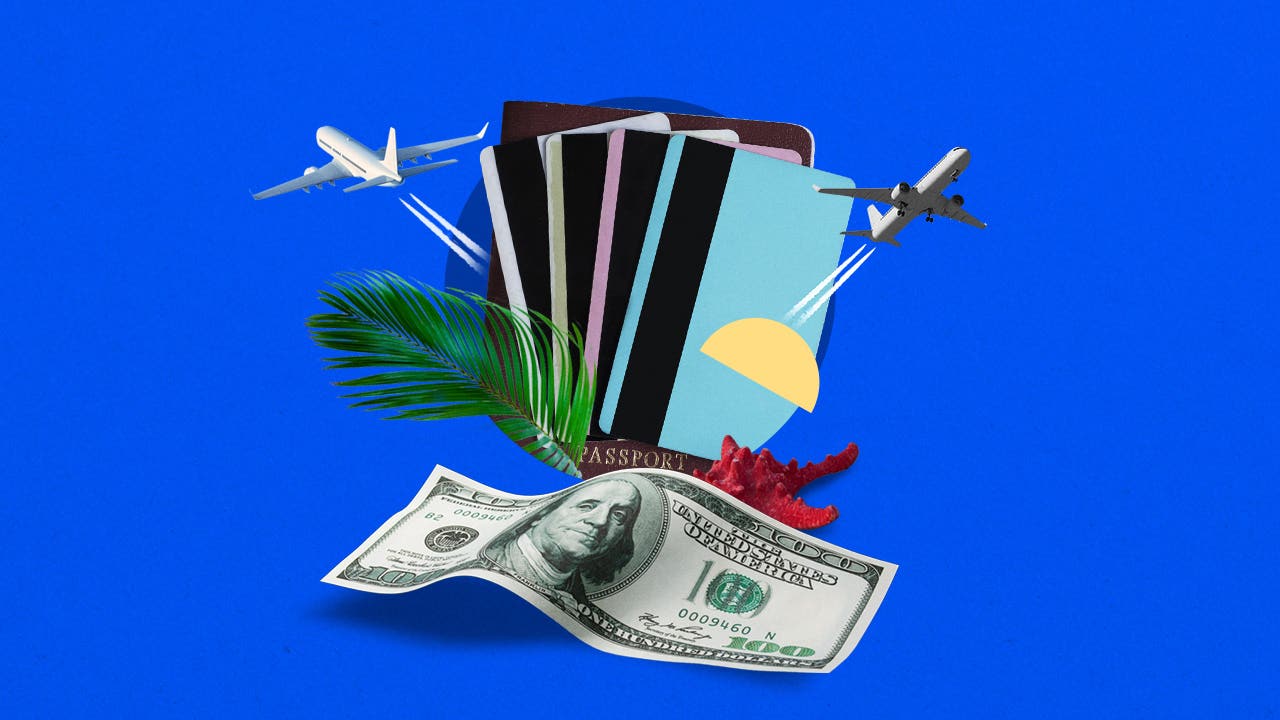
- • Consumer law
- • Monetary policy

- • Credit cards
- • Rewards credit cards
The Bankrate promise
At Bankrate we strive to help you make smarter financial decisions. While we adhere to strict editorial integrity , this post may contain references to products from our partners. Here's an explanation for how we make money . The content on this page is accurate as of the posting date; however, some of the offers mentioned may have expired. Terms apply to the offers listed on this page. Any opinions, analyses, reviews or recommendations expressed in this article are those of the author’s alone, and have not been reviewed, approved or otherwise endorsed by any card issuer.
At Bankrate, we have a mission to demystify the credit cards industry — regardless or where you are in your journey — and make it one you can navigate with confidence. Our team is full of a diverse range of experts from credit card pros to data analysts and, most importantly, people who shop for credit cards just like you. With this combination of expertise and perspectives, we keep close tabs on the credit card industry year-round to:
- Meet you wherever you are in your credit card journey to guide your information search and help you understand your options.
- Consistently provide up-to-date, reliable market information so you're well-equipped to make confident decisions.
- Reduce industry jargon so you get the clearest form of information possible, so you can make the right decision for you.
At Bankrate, we focus on the points consumers care about most: rewards, welcome offers and bonuses, APR, and overall customer experience. Any issuers discussed on our site are vetted based on the value they provide to consumers at each of these levels. At each step of the way, we fact-check ourselves to prioritize accuracy so we can continue to be here for your every next.
Editorial integrity
Bankrate follows a strict editorial policy , so you can trust that we’re putting your interests first. Our award-winning editors and reporters create honest and accurate content to help you make the right financial decisions.
Key Principles
We value your trust. Our mission is to provide readers with accurate and unbiased information, and we have editorial standards in place to ensure that happens. Our editors and reporters thoroughly fact-check editorial content to ensure the information you’re reading is accurate. We maintain a firewall between our advertisers and our editorial team. Our editorial team does not receive direct compensation from our advertisers.
Editorial Independence
Bankrate’s editorial team writes on behalf of YOU — the reader. Our goal is to give you the best advice to help you make smart personal finance decisions. We follow strict guidelines to ensure that our editorial content is not influenced by advertisers. Our editorial team receives no direct compensation from advertisers, and our content is thoroughly fact-checked to ensure accuracy. So, whether you’re reading an article or a review, you can trust that you’re getting credible and dependable information.
How we make money
You have money questions. Bankrate has answers. Our experts have been helping you master your money for over four decades. We continually strive to provide consumers with the expert advice and tools needed to succeed throughout life’s financial journey.
Bankrate follows a strict editorial policy , so you can trust that our content is honest and accurate. Our award-winning editors and reporters create honest and accurate content to help you make the right financial decisions. The content created by our editorial staff is objective, factual, and not influenced by our advertisers.
We’re transparent about how we are able to bring quality content, competitive rates, and useful tools to you by explaining how we make money.
Bankrate.com is an independent, advertising-supported publisher and comparison service. We are compensated in exchange for placement of sponsored products and services, or by you clicking on certain links posted on our site. Therefore, this compensation may impact how, where and in what order products appear within listing categories, except where prohibited by law for our mortgage, home equity and other home lending products. Other factors, such as our own proprietary website rules and whether a product is offered in your area or at your self-selected credit score range, can also impact how and where products appear on this site. While we strive to provide a wide range of offers, Bankrate does not include information about every financial or credit product or service.
Travel activity is on the rise as more Americans are on the go this year and engaging in so-called “revenge travel” to make up for trips not taken during the pandemic lockdown. By all means enjoy these trips, but also remember to stay safe — and that includes keeping your money secure while you’re out and about.
While cards are a staple for financial transactions, there may be circumstances where it’s appropriate to carry actual cash as well. Here are some tips on how to keep your money safe while you enjoy your travels.
Key cost of traveling statistics
- Travel and tourism accounted for 7.6 percent of global GDP in 2022 ( World Travel & Tourism Council )
- Attempts at digital fraud have gone up 80 percent from 2019 to 2022, as the number of digital transactions rose during the pandemic. The travel and leisure industry has been particularly hard hit, with a 117 percent rise in digital fraud attempts over this period. ( TransUnion )
- There were 440,631 reports of credit card identity theft fraud in 2022 ( Federal Trade Commission )
- Payment card fraud losses worldwide are projected to cumulate to $397 billion worldwide by 2031 ($165 billion for the U.S.), from more than $32 billion for 2021 ( Nilson Report )
- In 2021, there were about 54,000 cases of credit card fraud related to consumers on vacation ( Federal Trade Commission )
- Some pickpocketing hotspots globally (based on tourist reviews that mention pickpockets) are Barcelona, Paris and Rome ( money.co.uk )
Stick to credit cards…
One way to stay financially safe while traveling is to use credit cards . They come with zero liability protection in case your card is stolen or compromised, as well as other consumer protections. For one, you can dispute fraudulent charges and billing issues. If you use debit cards, you will have fewer protections and could find yourself on the hook for losses (though you’ll still want to keep a debit card with you for withdrawing cash at ATMs).
Different credit cards offer various travel perks (such as free lounge access, lost luggage compensation and travel insurance), so it can be a good idea to take two or more cards that align with your needs. It’s also smart to have more than one card handy in case you lose one. Cards issued by the Visa and Mastercard networks tend to have wider global acceptance than those issued by American Express and Discover.
As a safety measure, make copies of your cards to store your card information for reference in case you lose your physical cards. Don’t rely on using a mobile wallet rather than your physical cards, in case you lose your phone while traveling.
…But hold some cash, just in case
Even though it’s safer to rely primarily on credit cards, it’s still a good idea to have some cash available as a backup — and not just because it’ll come in handy if your cards are stolen. Smaller restaurants and retailers might insist on cash, and you could need cash to pay for smaller transactions with street vendors. Also, if you’re somewhere off the beaten path, cash is likely to be a more readily accepted mode of payment.
You can pick up cash before traveling by exchanging your U.S. dollars for the currency of your destination, for a fee, at a bank or credit union. At your destination, you can also get local currency at an ATM or at the airport right after your arrival (though, if you have to use an ATM, take the time to find one in a safe location).
That said, when you do carry cash, keep it safe. Opt for a money belt you can wear around your stomach, which can help you store your cash in an inconspicuous manner.
Let your bank know you’re traveling
Before heading out on your travels, notify your bank of your travel plans — especially if you’ll be traveling abroad. That way, it will know not to decline transactions that seem suspicious. You can do this over the phone, by contacting a representative or online.
Keep in mind that banks often utilize fraud prevention measures that could be triggered if they see activity on your card account that isn’t in line with your typical spending patterns. Your issuer could then suspend your account while contacting you to verify the charge, potentially putting you in a tough position while traveling.
Since you don’t want to have a card transaction declined unexpectedly and be left without any means of paying for your purchase, keep your bank informed about your travel plans. Then, when it sees any charges you make while miles away from your homebase, there shouldn’t be an issue.
Set up account alerts
While notifying your bank of your plans, see if you can sign up for credit card account alerts at the same time. When you set up purchase alerts, you’ll get text, email or push notifications whenever your card is used. Then, if your card is somehow compromised and someone uses it for an unauthorized transaction, you’ll know about it in time to take action.
If you get a notification about a transaction you don’t recognize, immediately notify your issuer so that it can look into the matter and freeze the card if necessary.
Freezing your credit may also be a good idea, so that no one can fraudulently open credit card accounts in your name while traveling. If needed, all three credit bureaus — Experian, Equifax and TransUnion — allow you to briefly thaw your credit freezes in order to apply for credit. Once the thaw period expires, your credit will be re-frozen, protecting you while you’re away.
Be on the lookout for scammers
Tourists on vacation can be an easy target for scammers, which is why it’s important to be watchful of your belongings and cash.
One popular scam is credit card skimming . This is common at gas stations and other places that have ATMs, as ATMs can be set up to capture your card information and enable scammers to use it for fraudulent transactions.
To protect yourself, prevent people nearby from seeing your personal identification number (PIN) when you enter it at the ATM. Further, don’t give your passport or credit cards as a security deposit to tour operators or others, and avoid overindulging at local bars. Doing so can cause your judgment to be compromised, allowing unscrupulous people to take advantage of you.
Pickpockets also present a hazard to unsuspecting tourists. Based on tourist reviews, popular tourist spots such as Barcelona, Paris and Rome tend to attract pickpockets looking to prey on tourists, so be careful in these types of destinations. Pickpockets may operate alone or in a team, with one person distracting you while their partner looks to take your wallet.
Be watchful when shopping with street vendors too, as they could compromise your credit card or give you incorrect change. And while most merchants are reputable, some may well team up with pickpockets and distract you while their partners ply their trade on you.
Consider getting travel insurance
You may also be wondering if travel insurance is worth it. This sort of insurance offers protection against medical emergencies, trip cancellations and lost baggage.
However, note that a number of credit cards also come with travel insurance benefits that protect you from the fallouts of canceled flights (including a potential hotel stay) or lost baggage, assuming you use the card to book your travel. Medical expenses that your health insurance won’t pick up could also be covered by your credit card’s travel insurance.
If you’re on an extended international trip, though, it may be a good idea to take out a separate travel insurance policy. These types of policies are available on a one-off or annual basis, and they can be used to cover any shortfalls between your card’s travel insurance and your medical insurance. Take the time to evaluate any travel insurance or card benefits you already have access to before deciding whether a standalone policy will be worthwhile.
What to do if you’re robbed abroad
As a tourist, you may be vulnerable to being robbed. Be especially careful when you’re in a crowded area, as pickpockets could sense an opportunity to take advantage of you. That said, it may not even be a physical assault that you fall victim to. You could have your card information or other sensitive personal information stolen if you use unsecured public wi-fi, use an ATM with a card skimmer or lose your cards.
To minimize the impact of an attack, don’t carry more cash than you anticipate needing for the day. Also, be careful with your mobile phone, as it contains a lot of information about you, potentially including your credit card and bank information.
In case you do end up getting robbed, immediately contact the local police station and file a report. You should also get a copy of this report for when you file an insurance claim. If your credit card is stolen, get in touch with your bank — and if it’s your passport that thieves get away with, get in touch with the nearest U.S. embassy ASAP.
If your credit card information or other personal information is compromised, it’s also a good idea to keep a watch on your credit report (assuming it hasn’t already been frozen). That way, you’ll know right away if a fraudster takes out credit in your name.
Frequently asked questions
Where is the best place to keep your passport and money while traveling, what does travel insurance cover, are hotel safes safe.

Related Articles

Personal banking when you travel abroad

Travel scams that can hurt your credit and finances

Solo female travel: How to keep yourself and your finances safe

Two-factor authentication for your financial accounts — here’s how secure it really is
Here Are the Four Best Travel Money Cards in 2024

François Briod
Co-Founder of Monito and money transfer expert, François has been helping Monito’s users navigate the jungle of money transfer fees, bad exchange rates and tricks for the last ten years.
Jarrod Suda

A writer and editor at Monito, Jarrod is passionate about helping people apply today’s powerful finance technologies to their lives. He brings his background in international affairs and his experiences living in Japan to provide readers with comprehensive information that also acknowledges the local context.
Links on this page, including products and brands featured on ‘Sponsored’ content, may earn us an affiliate commission. This does not affect the opinions and recommendations of our editors.
From the multitude of bank fees and ATM charges to hidden currency conversion fees, there's no question that spending your money abroad while travelling can be costly — and that's saying nothing about the cost of the holiday itself!
As you prepare for your trip abroad, the golden rule is that you'll save the most money by using the local currency of your destination. This means withdrawing local cash at foreign ATMs and using a debit card to pay directly in the local currency. For example, if you're from the UK, using your bank's debit card that accesses your British pounds will likely lose you money to hidden fees at ATMs abroad and at local merchants.
In general, we rate Revolut as the best travel card all around. Its versatile account and card can be used to spend like a local pretty much anywhere in the world. ✨ Get 3 months of free Revolut Premium as a Monito reader with our exclusive link .
If you're from the EU, UK, or US, here are a few more specific recommendations to explore:
- Best for travelling from the UK: Chase
- Best for travelling from the US: Chime ®
- Best for travelling from the Eurozone: N26
If it's not possible for you to spend in the local currency when travelling abroad, then spending in your home currency while using a card that doesn't charge any hidden exchange rate markups from your bank (e.g. only the VISA or Mastercard exchange rates to convert currency) is still a good bet for most people.
In this guide, we explore cards that waive or lower ATM fees and that hold multiple currencies. Spend on your holiday like a local and enjoy peace of mind after each tap and swipe!
Best Travel Cards (And More!) at a Glance
Best travel money cards.
- 01. What is the best best multi currency card? scroll down
- 02. Are prepaid currency cards really it? scroll down
- 03. Monito's best travel money card tips scroll down
- 04. FAQ about the best travel cards scroll down
Revolut: Best All-Rounder
Revolut is one of the most well-known fintechs in the world because it offers services across Europe, the Americas, Asia, and Oceania.

- Trust & Credibility 8.9
- Service & Quality 7.9
- Fees & Exchange Rates 8.3
- Customer Satisfaction 9.4
Revolut is available in many countries. You can double-check if it's available in yours below:
Here's an overview of Revolut's plans:
Revolut Ultra is currently only available in the UK and EU.
Like Wise, Revolut converts your currency to the local currency of your travel destination at an excellent exchange rate (called the 'Revolut Rate', which, on weekdays, is basically on par with the rate you see on Google), making it a good way to buy foreign currency before travelling abroad. As always though, bear in mind that Revolut's exchange rates might be subject to change.
Revolut's Standard Plan only allows currency exchange at the base mid-market exchange rate for transfers worth £1,000 per month. ATM withdrawals are also free for the first €200 (although third-party providers may charge a withdrawal fee, and weekend surcharges may also apply). These allowances can be waived by upgrading memberships.
N26: Good Bank For EU Travellers
One of the most well-known neobanks in Europe, N26 and its debit card operate in euros only. However, N26 is a partner with Wise and has fully integrated Wise's technology so that you never have to pay foreign transaction fees on your purchases outside of the eurozone. While N26 does not have multi-currency functionality, N26 will apply the real exchange rate on all your foreign purchases and will never charge a commission fee — making N26's card a powerful card for EU/EEA residents who travel across the globe.

- Trust & Credibility 7.9
- Service & Quality 8.0
- Fees & Exchange Rates 9.3
- Customer Satisfaction 8.1
These are the countries in which you can register for an N26 account:
And here is an overview of the various plans and account:
This low-fee option for banking is also ideal for travellers who do not belong to a European bank but frequent the Eurozone. For example, N26 is available for residents and citizens of Switzerland, Norway, and other European Economic Area countries that do not run on the Euro.
These citizens, who are in close proximity to the Eurozone, will save each time they spend with an N26 card while in Europe. N26 provides three free ATM withdrawals per month in euros but does charge a 1.7% fee per ATM withdrawal outside of Europe.
Take a look at our guide to the best travel cards for Europe to learn more.
Wise: Best For Multi-Currency Balances
Load up to 54 currencies onto this card at the real exchange rate, giving you access to truly global travel.

- Trust & Credibility 9.3
- Service & Quality 8.9
- Fees & Exchange Rates 7.6
- Customer Satisfaction 9.6
These are the countries in which you can order a Wise debit card:
Unlike banks, credit unions, airport kiosks, and foreign ATMs, Wise is transparent about never charging a hidden exchange rate margin when you convert your home currency into up to 54 currencies. The live rate you see on Google or XE.com is the one you get with Wise.
An industry-low commission fee per transaction will range from 0.35% to 2.85%, depending on the currency.
Chase: Great UK Bank For Travel
A recent arrival from the USA, Chase is one of the UK’s newest digital challenger banks and comes with a rock-solid reputation and no monthly charges, no currency conversion charges, no withdrawal fees, and no other charges for everyday banking from Chase. It’s a simple, streamlined bank account with an excellent mobile banking app and a great cashback offer. However, it doesn’t yet offer more advanced features like international money transfers, joint accounts, business banking, overdrafts and loans, and teen or child accounts.

- Trust & Credibility 10
- Fees & Exchange Rates 10
- Customer Satisfaction 8.7
Chime: Great Account For US Travelers
Chime is a good debit card for international travel thanks to its no foreign transaction fees¹. Unlike multi-currency accounts like Revolut (which let you hold local currency), Chime uses the live exchange rate applied by VISA. This rate is close to the mid-market rate, and Chime does not add any extra markup to your purchases, although out-of-network ATM withdrawal and over-the-counter advance fees may still apply.

- Trust & Credibility 9.5
- Service & Quality 8.8
- Fees & Exchange Rates 9.8
While Chime waives ATM fees at all MoneyPass, AllPoint, and VISA Plus Alliance ATMs within the United States, this fee waiver does not extend to withdrawals made outside the country. For withdrawals abroad, Chime applies a $2.50 fee per transaction, with a daily withdrawal limit of $515 or its equivalent. This is in addition to any fees charged by the ATM owner. Therefore, we recommend Chime primarily for card purchases rather than relying on it for withdrawing cash while traveling internationally.
- No foreign transaction fees ¹;
- Uses VISA's exchange rate ( monitor here ):
- A $2.50 fee per ATM withdrawal made outside of the United States;
- More info: Read our Chime review or visit their website .
Best Travel Money Cards in 2024 Compared by Country
In the table below, see our comparison summary of the four best travel cards for 2024 by country:
Last updated: 8 January 2024
What's The Best Prepaid Card to Use Abroad?
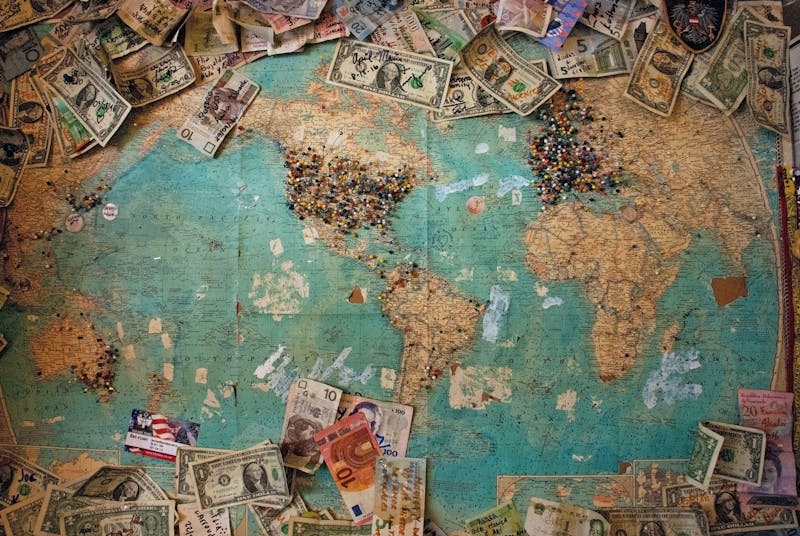
Travel cards come in many varieties, such as standard credit cards or debit cards with no foreign transaction fees or cards that waive all foreign ATM withdrawal fees.
What is a Multi-Currency Card?
Multi-currency cards are a specific type of travel card that allows you to own all kinds of foreign currencies, which you can instantly access when you pay with your card abroad. By spending the local currency in the region of travel , you bypass poor foreign exchange rates. ATMs and cashless payment machines will treat your card like a local card.
We have already mentioned a few multi-currency cards in this review, but we will also introduce Travelex . Travelex's Money Card also allows you to top up several foreign currencies — albeit at exchange rates slightly poorer than the real mid-market rate .
Wise Account
Wise has one of the best multi-currency cards available on the market.

Read our full review for more details.
Revolut is impressive for its vast options in currencies and its additional services.
Our in-depth review explores Revolut's services in detail.
Travelex offers a prepaid travel money card that supports 10 currencies and waives all ATM withdrawal fees abroad.

- Trust & Credibility 9.0
- Service & Quality 5.8
- Fees & Exchange Rates 7.1
- Customer Satisfaction 9.3
Travelex charges fees, which fluctuate according to the exchange rates of the day, in order to convert your home currency into the currencies that it supports. But once the currency is on the card, you'll be able to spend like a local. Learn more with our full review .
Don’t Let Banks, Bureaux de Change, and ATMs Eat Your Lunch 🍕!
Are you withdrawing cash at an ATM in the streets of Paris? Exchanging currencies at Gatwick airport? Paying for a pizza with your card during a holiday in Milano? Every time you exchange currencies, you could lose between 2% to 20% of your money in hidden fees . Keep reading below to make sure you recognize and avoid them.
Currency Exchange Fees Eating My Lunch? What’s That?
You’re often charged a hidden fee in the form of an alarming exchange rate.
At any given time, there is a so-called “ mid-market exchange rate ” — this is the real exchange rate you can see on Google . However, the money transfer provider or bank you use to exchange currencies rarely offers this exchange rate. Instead, you will get a much worse exchange rate. They pocket this margin between the actual rate and the poor exchange rate they apply, allowing the bank or money transfer provider to profit from the currency exchange.
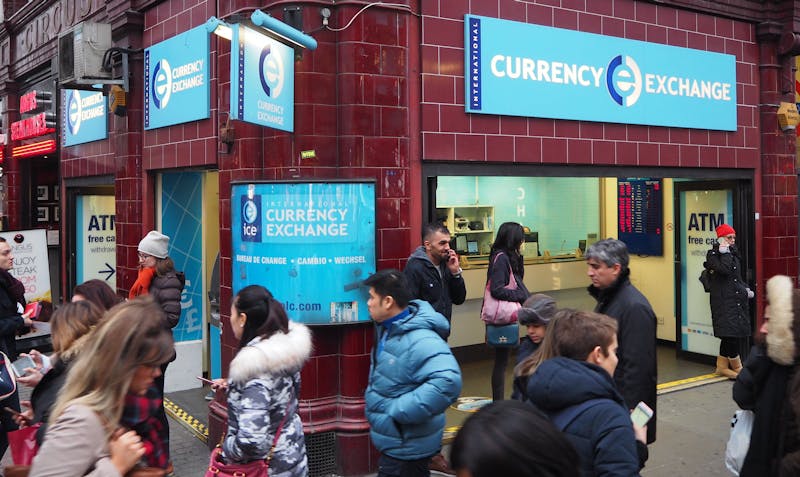
In other words, you or your recipient will receive less foreign currency for each unit of currency you exchange. All the while, the provider will claim that they charge zero commission or zero fees.
So the question now is… how can you avoid them? Thankfully, the best travel money cards will allow you to hold the local currency, which you can access instantly with a tap or swipe. Carrying the local currency avoids exchange rate margins on every purchase.
Top Travel Money Tips
- Avoid bureaux de change. They charge between 2.15% and 16.6% of the money exchanged.
- Always pay in the local currency and never accept the dynamic currency conversion .
- Don't use your ordinary debit or credit card unless it's specifically geared toward international use. Doing this will typically cost you between 1.75% and 4.25% per transaction. Instead, use one of the innovative travel money cards below.
By opting for a travel card without FX fees, you can freely swipe your card abroad without worrying about additional charges. However, saving money doesn't stop there. To make the most out of your travel budget, consider using Skyscanner , one of the most powerful flight search engines available that allows you to compare prices from various airlines and find the best deals.
With Skyscanner's user-friendly interface and comprehensive search options, you can discover cheap flights and enjoy your holidays with peace of mind and more money in your pocket.
Best Travel Money Card Tips

When you convert your home currency into a foreign currency, foreign exchange service providers will charge you two kinds of fees :
- Exchange Rate Margin: Providers apply an exchange rate that is poorer than the true "mid-market" exchange rate . They keep the difference, called an exchange rate margin .
- Commission Fee: This fee is usually a percentage of the amount converted, which is charged for the service provided.
With these facts in mind, let's see what practices are useful to avoid ATM fees, foreign transaction fees, and other charges you may encounter while on your travels.
Tip 1: While Traveling, Avoid Bureaux de Change At All Costs
Have you ever wondered how bureaux de change and currency exchange desks are able to secure prime real estate in tourist locations like the Champs-Élysées in Paris or Covent Carden in London while claiming to take no commission? It’s easy: they make (plenty of) money through hidden fees on the exchange rates they give you.
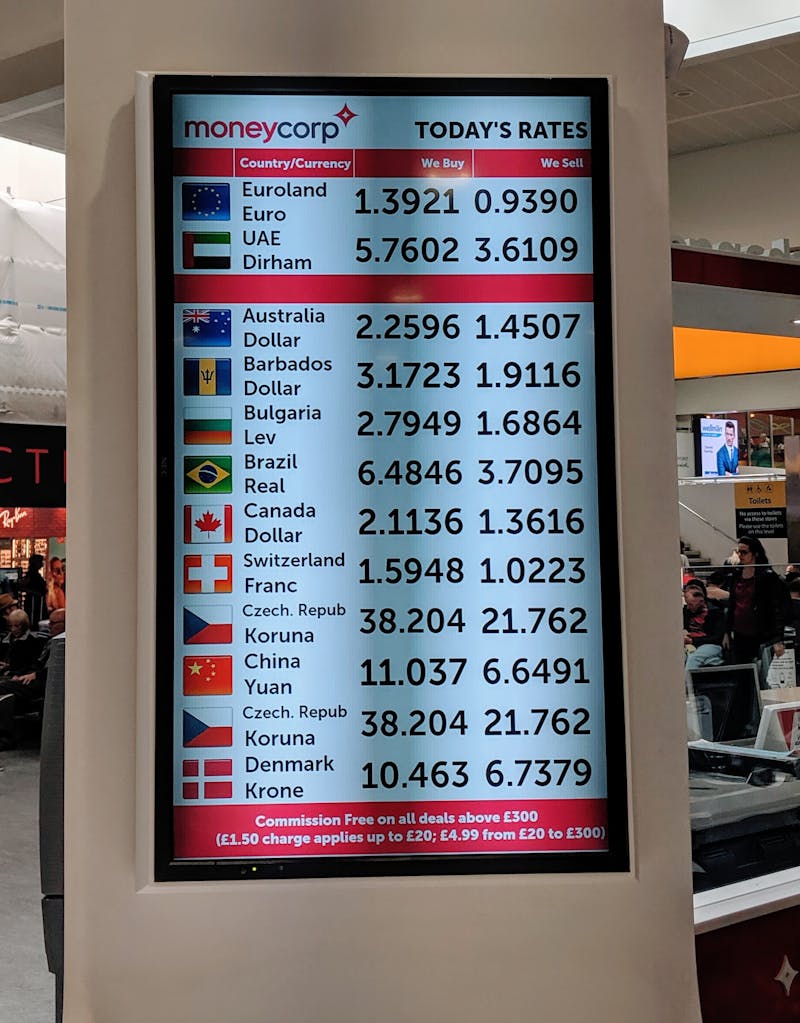
Our study shows that Bureaux de Change in Paris charges a margin ranging from 2.15% at CEN Change Dollar Boulevard de Strasbourg to 16.6% (!!) at Travelex Champs-Élysées when exchanging 500 US dollars into euros for example.
If you really want cash and can’t wait to withdraw it with a card at an ATM at your destination, ordering currencies online before your trip is usually cheaper than exchanging currencies at a bureau de change, but it’s still a very expensive way to get foreign currency which we, therefore, would not recommend.
Tip 2: Always Choose To Pay In the Local Currency

Don’t fall for the dynamic currency conversion trap! When using your card abroad to pay at a terminal or withdraw cash at an ATM, you’ve probably been asked whether you’d prefer to pay in your home currency instead of the local currency of the foreign country. This little trick is called dynamic currency conversion , and the right answer to this sneaky question will help you save big on currency exchange fees.
As a general rule, you always want to pay in the local currency (euros in Europe, sterling in the UK, kroner in Denmark, bahts in Thailand, etc.) when using your card abroad, instead of accepting the currency exchange and paying in your home currency.
This seems like a trick question - why not opt to pay in your home currency? On the plus side, you would know exactly what amount you would be paying in your home currency instead of accepting the unknown exchange rate determined by your card issuer a few days later.
What is a Dynamic Currency Conversion?
However, when choosing to pay in your home currency instead of the local one, you will carry out what’s called a “dynamic currency conversion”. This is just a complicated way of saying that you’re exchanging between the foreign currency and your home currency at the exact time you use your card to pay or withdraw cash in a foreign currency, and not a few days later. For this privilege, the local payment terminal or ATM will apply an exchange rate that is often significantly worse than even a traditional bank’s exchange rate (we’ve seen margins of up to 8%!), and of course, much worse than the exchange rate you would get by using an innovative multi-currency card (see tip #3).
In the vast majority of times, knowing with complete certainty what amount you will pay in your home currency is not worth the additional steep cost of the dynamic currency conversion, hence why we recommend always choosing to pay in the local currency.
Tip 3: Don't Use a Traditional Card To Pay in Foreign Currency/Withdraw Cash Abroad
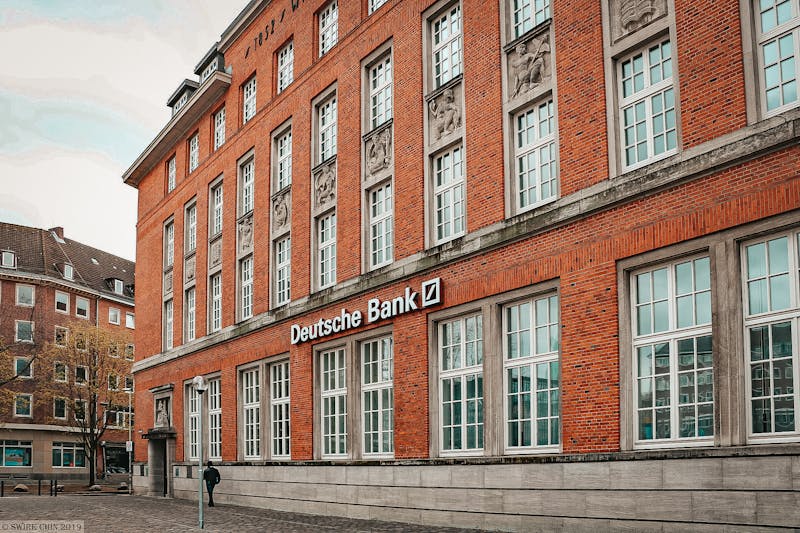
As mentioned before, providers make money on foreign currency conversions by charging poor exchange rates — and pocketing the difference between that and the true mid-market rate. They also make money by charging commission fees, which can either come as flat fees or as a percentage of the transaction.
Have a look at traditional bank cards to see how much you can be charged in fees for spending or withdrawing $500 while on your holiday.
These fees can very quickly add up. For example, take a couple and a child travelling to the US on a two-week mid-range holiday. According to this study , the total cost of their holiday would amount to around $4200. If you withdraw $200 in cash four times and spend the rest with your card, you would pay $123 in hidden currency exchange and ATM withdrawal fees with HSBC or $110 with La Banque Postale. With this money, our travellers could pay for a nice dinner, the entrance fee to Yosemite Park, or many other priceless memories.
Thankfully, new innovative multi-currency cards will help you save a lot of money while travelling. Opening an N26 Classic account and using the N26 card during the same US holidays would only cost $13.60.
Need Foreign Cash Anyway?
In many countries, carrying a wad of banknotes is not only useful but necessary to pay your way since not every shop, market stall, or street vendor will accept card payments. In these cases you'll have two options to exchange foreign currency cheaply:
1. Withraw at an ATM
As we've explored in great depth in this article, withdrawing money from a foreign ATM will almost always come with fees — at the very least from the ATM itself, and so it's therefore the best strategy to use a travel debit card that doesn't charge in specific ATM withdraw fees on its own to add insult to injury. That said, if you need cash, we recommend making one large withdrawal rather than multiple smaller ones . This way, you'll be able to dodge the fees being incurred multiple times.
2. Buy Banknotes (at a Reasonable Rate!)
As we've also seen, buying foreign currency at the airport, at foreign bank branches, or in bureaux de change in tourist hotspots can be surprisingly expensive. Still, not all exchange offices are equally pricey . If you're looking for a well-priced way to exchange your cash into foreign currency banknotes before you travel, Change Group will let you order foreign currency online and pick them up at the airport, train station, or a Change Group branch just before you leave for your holiday. A few pick-up locations in the UK include:
- London centre (multiple locations),
- Glasgow centre,
- Oxford centre,
- Luton Airport,
- Gatwick Airport,
- St. Pancras Station.
(Note that Change Group also has locations in the USA, Australia, Germany, Spain, Sweden, Austria, and Finland!)
Although its exchange rates aren't quite as good as using a low-fee debit card like Revolut, Change Group's exchange rates between popular currencies tend to be between 2% to 3%, which is still a lot better than you'll get at the bank or at a touristy bureau de change in the middle or Paris or Prague!
FAQ About the Best Travel Money Cards
Having reviewed and compared several of the industry's leading neobanks, experts at Monito have found the Wise Account to offer the best multi-currency card in 2024.
In general, yes! You can get a much better deal with new innovative travel cards than traditional banks' debit/credit cards. However, not all cards are made equal, so make sure to compare the fees to withdraw cash abroad, the exchange rates and monthly fees to make sure you're getting the best deal possible.
- Sign up for a multi-currency account;
- Link your bank to the account and add your home currency;
- Convert amount to the local currency of holiday destination ( Wise and Revolut convert at the actual mid-market rate);
- Tap and swipe like a local when you pay at vendors.
Yes, the Wise Multi-Currency Card is uniquely worthwhile because it actually converts your home currency into foreign currency at the real mid-market exchange rate . Wise charges a transparent and industry-low commission fee for the service instead.
More traditional currency cards like the Travelex Money Card are good alternatives, but they will apply an exchange rate that is weaker than the mid-market rate.
The Wise Multi-Currency Card is the best money card for euros because unlike banks, credit unions, airport kiosks, and foreign ATMs, Wise is transparent about never charging a hidden exchange rate margin when you convert your local currency into euros with them.
The live rate you see on Google or XE.com is the one you get with Wise . An industry-low commission fee will range from 0.35% to 2.85%. USD to EUR transfers generally incur a 1.6% fee.
Learn more about how to buy euros in the United States before your trip.
There are usually three types of travel cards, prepaid travel cards, debit travel cards and credit travel cards. Each have pros and cons, here's a short summary:
- Prepaid travel cards: You usually need to load cards with your home currency via a bank wire or credit/debit card top-up. You're then able to manage the balance from an attached mobile app and can use it to pay in foreign currencies or withdraw cash at an ATM abroad tapping into your home currency prepaid balance. With prepaid travel cards, as the name indicates, you can't spend more than what you've loaded before hand. Some prepaid card providers will provide ways to "auto top-up" when your balance reaches a certain level that you can customize. On Revolut for example, you can decide to top-up £100/£200/£500 from your debit card each time your balance reaches below £50.
- Debit travel cards: Some innovative digital banks, like N26 or Monzo, offer travel debit cards that have the same advantages than a Prepaid Travel Cards, except that they're debit card directly tapping into your current account balance. Like a Prepaid travel card, you can't spend more than the balance you have in your current account with N26 or Monzo, but you can activate an overdraft (between €1,000 or €10,000 for N26 or £1,000 for Monzo) if you need it, for a fee though.
Note that even if they're Prepaid or Debit cards, you can use them for Internet payments like a normal credit card.
- Credit travel cards: You can find credit cards made for international payments offering good exchange rates and low fees to withdraw money abroad, but you'll need to pay interests in your international payment if you don't pay in FULL at the end of every month and interest on your ATM withdrawals each day until you pay them back.
Why You Can Trust Monito
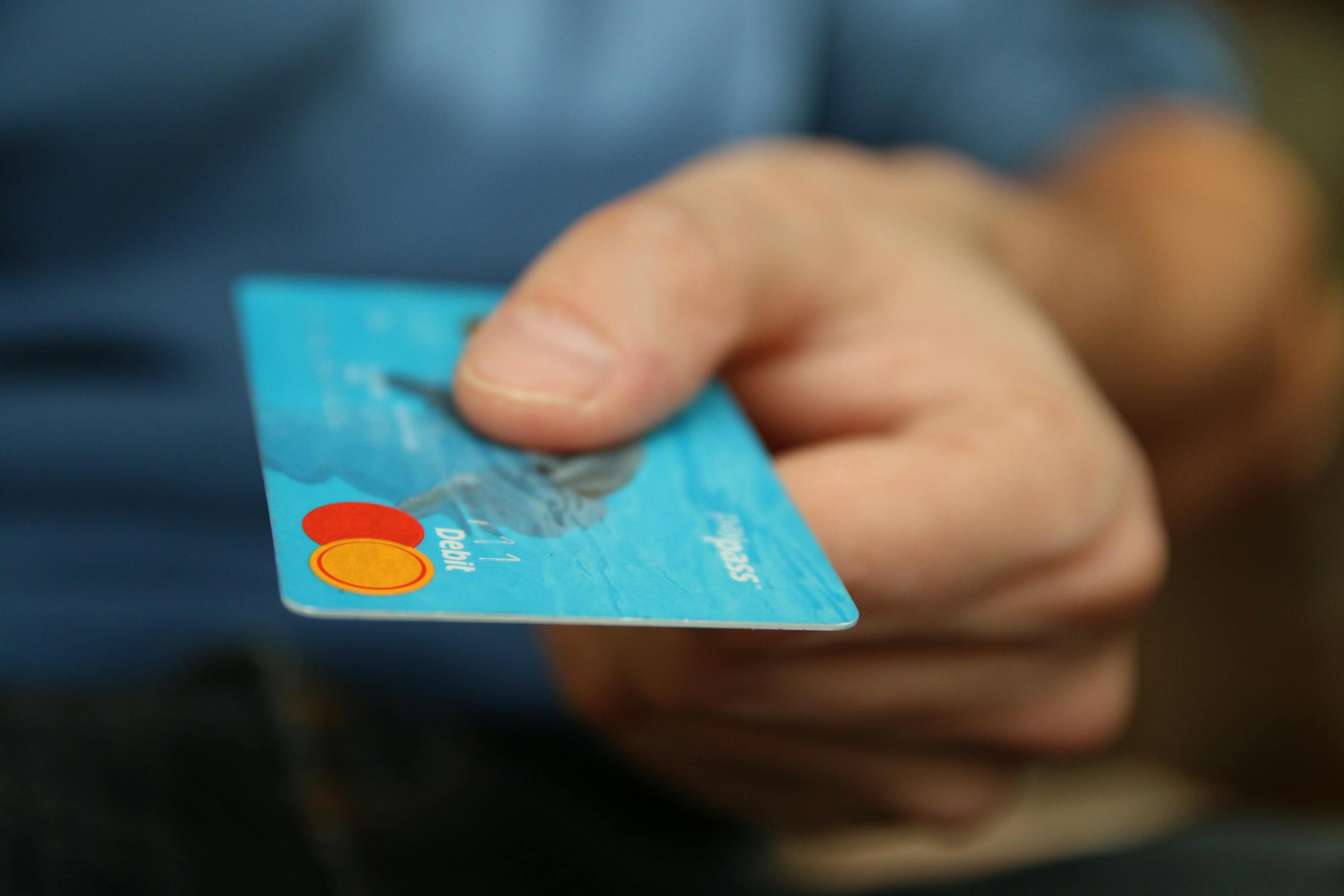
Our recommendations are built on rock-solid experience.
- We've reviewed 70+ digital finance apps and online banks
- We've made 100's of card transactions
- Our writers have been testing providers since 2013
Other Monito Guides and Reviews on Top Multi Currency Cards
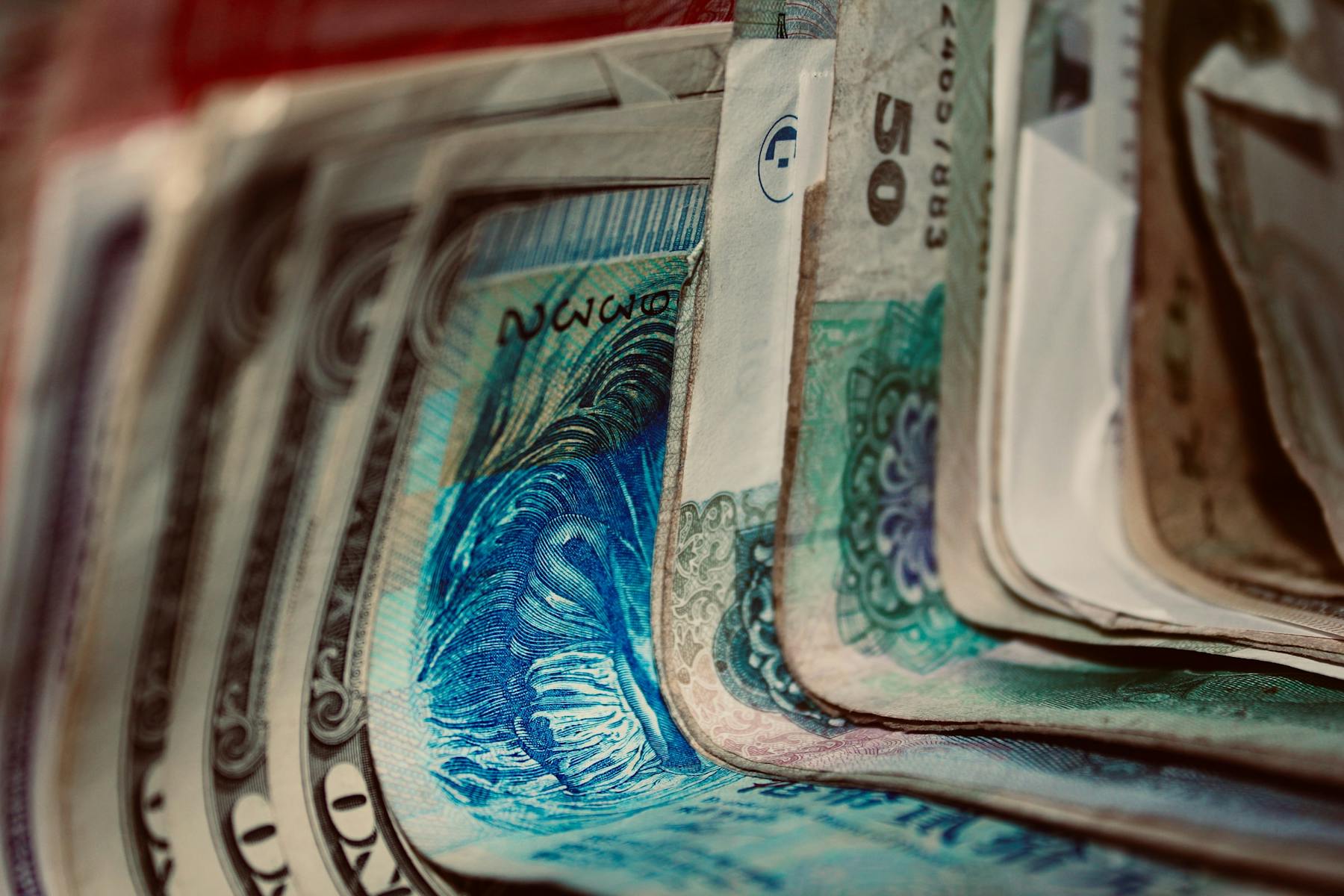
Why Trust Monito?
You’re probably all too familiar with the often outrageous cost of sending money abroad. After facing this frustration themselves back in 2013, co-founders François, Laurent, and Pascal launched a real-time comparison engine to compare the best money transfer services across the globe. Today, Monito’s award-winning comparisons, reviews, and guides are trusted by around 8 million people each year and our recommendations are backed by millions of pricing data points and dozens of expert tests — all allowing you to make the savviest decisions with confidence.
Monito is trusted by 15+ million users across the globe.
Monito's experts spend hours researching and testing services so that you don't have to.
Our recommendations are always unbiased and independent.

Online Banking

Visa Travel Money
have a question?
Features and Benefits:
- 24 hour access to cash through over 1 million Visa ATMs
- Accepted at all Visa participating merchants worldwide
- Flexible amounts ($100 - $5,000)
- Replace a lost or stolen card**
- Click here for more information
Related Pages
Visa Platinum Cards Visa Rewards Visa Travel Money
Fields marked with * are required
- Credit cards
- View all credit cards
- Banking guide
- Loans guide
- Insurance guide
- Personal finance
- View all personal finance
- Small business
- Small business guide
- View all taxes
You’re our first priority. Every time.
We believe everyone should be able to make financial decisions with confidence. And while our site doesn’t feature every company or financial product available on the market, we’re proud that the guidance we offer, the information we provide and the tools we create are objective, independent, straightforward — and free.
So how do we make money? Our partners compensate us. This may influence which products we review and write about (and where those products appear on the site), but it in no way affects our recommendations or advice, which are grounded in thousands of hours of research. Our partners cannot pay us to guarantee favorable reviews of their products or services. Here is a list of our partners .
The Best Chase Credit Card Strategy for Travel

Many or all of the products featured here are from our partners who compensate us. This influences which products we write about and where and how the product appears on a page. However, this does not influence our evaluations. Our opinions are our own. Here is a list of our partners and here's how we make money .
Chase offers a wide variety of credit cards for travelers. For example, travelers can benefit from a Chase Ultimate Rewards® transferable points card plus airline and hotel co-branded cards. Even the no-annual-fee Freedom-branded cards can play a role in a Chase credit card strategy.
Depending on how complex of a strategy you want to pursue, you can carry just one Chase card, try out the Chase trifecta or build a portfolio of a half-dozen or more cards to complement each other. Let's look at our recommended Chase credit card strategy for all types of travelers and credit card nerds.
Start with an Ultimate Rewards® points-earning card

Whether you're just getting started in travel rewards or are looking to fill gaps in your Chase credit card strategy, a card that earns Ultimate Rewards®, which is also known as a transferable currency , is a must. For many travelers, the $95 annual fee Chase Sapphire Preferred® Card is going to be the best choice.
Points earned through the Chase Sapphire Preferred® Card can be transferred to 14 airline or hotel loyalty programs . Or, you can redeem points for paid travel at a rate of 1.25 cents per point through Chase's travel portal . Plus, cardholders get up to $50 in statement credits each account year for hotel stays booked through the portal.
Chase Sapphire Preferred® Card holders earn 5x points on travel purchased through Chase's portal (except when utilizing the $50 hotel credit ) and 2x on all other travel. Plus, you'll earn 3x points on dining, online grocery purchases and select streaming services. All other purchases earn 1x points. Then, each cardholder anniversary, you'll earn another 10% points bonus on all card spending from the previous year.
Perhaps the most underrated aspect of the Chase Sapphire Preferred® Card is the long list of travel protections :
Auto rental collision damage waiver.
Trip cancellation/interruption insurance.
Baggage delay insurance.
Trip delay reimbursement.
Travel and emergency assistance services.
Other Chase cards that earn transferable Ultimate Rewards® points include the premium Chase Sapphire Reserve® and the Ink Business Preferred® Credit Card for small business owners.
Current Chase Sapphire Reserve® holders aren't eligible to get the Chase Sapphire Preferred® Card as a downgrade. Instead, consider downgrading to a Freedom-branded card before applying for a new Chase Sapphire Preferred® Card .
Depending on how you travel, the Chase Sapphire Reserve® may be a better fit for your Chase credit card strategy. For a $550 annual fee, the Chase Sapphire Reserve® offers travelers complimentary access to 1,300+ airport lounges, TSA PreCheck or Global Entry application fee reimbursement, access to The Luxury Hotel & Resort Collection bookings, and other premium travel benefits not available to Chase Sapphire Preferred® Card holders.

» Learn more: Is the Chase Sapphire Reserve® worth the annual fee?
Get a hotel card for elite status, bonus points and a free night
Once you have an Ultimate Rewards® earning card, consider adding a hotel co-branded card to your Chase credit card strategy. After all, whether you travel by plane or car, you'll probably need a hotel stay.
Chase partners with three hotel loyalty programs to offer co-branded credit cards: IHG One Rewards , Marriott Bonvoy and World of Hyatt . The best hotel card will depend on the hotel loyalty program that's right for you.
Top Chase hotel credit card options include:
IHG One Rewards Premier Credit Card : Earn 140,000 Bonus Points after spending $3,000 on purchases in the first 3 months from account opening.
Marriott Bonvoy Boundless® Credit Card : Earn 3 Free Night Awards (each night valued up to 50,000 points) after spending $3,000 on purchases in your first 3 months from account opening with the Marriott Bonvoy Boundless® Credit Card!
World of Hyatt Credit Card : Earn 30,000 Bonus Points after you spend $3,000 on purchases in your first 3 months from account opening. Plus, up to 30,000 More Bonus Points by earning 2 Bonus Points total per $1 spent in the first 6 months from account opening on purchases that normally earn 1 Bonus Point, on up to $15,000 spent.
The perks of these hotel co-branded credit cards vary. However, each card includes a free reward night (awarded each year following the account anniversary), elite status, bonus points on stays and additional bonus points categories. All of these perks come at a reasonable price. Each consumer Chase hotel co-branded card charges an annual fee of less than $100.
» Learn more: How to choose the best hotel rewards program for you

Score free checked bags plus other perks with an airline card
The next piece of your Chase credit card strategy is adding an airline co-branded card. Like with the hotel card, the best choice is going to depend on what airline you prefer to fly .
Chase partners with the following six airlines to offer at least one consumer credit card:
Southwest Airlines .
United Airlines .
Air Canada .
Aer Lingus.
British Airways .
Iberia Airlines .
The perks on these airline co-branded cards vary even more than on hotel cards. For instance, the United℠ Explorer Card offers cardholders a first checked bag for free, priority boarding, two United Club lounge passes each account anniversary and expanded award availability . Meanwhile, the British Airways Visa Signature® Card offers cardholders 10% off British Airways paid flights plus up to $600 in statement credits to offset taxes and fees on award bookings.
Top Chase airline credit cards with less than a $100 annual fee include:
Aeroplan® Credit Card : Earn 60,000 points after you spend $3,000 on purchases in the first 3 months your account is open.
Southwest Rapid Rewards® Premier Credit Card : Earn 50,000 bonus points after spending $1,000 on purchases in the first 3 months from account opening.
» Learn more: The best travel credit cards right now
Boost your points earnings with a Freedom card
Once you have an Ultimate Rewards® earning card and a Chase airline or hotel co-branded card, consider rounding out your Chase credit card strategy with a Freedom-branded card or two .
Chase Freedom cards are marketed as cash back cards. However, if you have an Ultimate Rewards® points-earning card, you can combine the earnings from a Freedom-branded card with your Ultimate Rewards® points. That makes these points fully transferable to Ultimate Rewards® transfer partners and boosts the value when redeemed through Chase's portal.
That means you can effectively consider the earning rates on Freedom cards as points-earning rates instead of cash back.
Chase Freedom Unlimited® is a great choice for boosting the earnings on your everyday purchases. Cardholders earn 1.5x points on non-bonus spending. Plus, you'll earn 4.5x points on dining and drugstores during your first year (on up to $20,000 in spending), after that you'll 3x points. Or, opt for the Chase Freedom Flex℠ to earn 5x points on up to $1,500 in spending in a rotating bonus category each quarter plus 3x points on dining and drugstores.
Consider upgrading to a Chase Sapphire Reserve® card

Say you've built up a significant Ultimate Rewards® balance through a Chase Sapphire Preferred® Card and a Freedom-branded card or two. With your current card portfolio, you can redeem points for travel through Chase at a rate of 1.25 cents per point.
However, there's an easy way of boosting the value of your Ultimate Rewards® points: upgrading to a Chase Sapphire Reserve® card. By doing so, you can redeem your same stash of Ultimate Rewards® points at a rate of 1.5 cents per point — a 20% boost to the value.
That might not sound like a lot, but it can really move the needle if you have a significant balance in points. For example, say you've built up a balance of 200,000 Ultimate Rewards® points. Boosting the redemption rate of those points from 1.25 to 1.5 cents each increases the value of those points by $500.
Upgrading to the Chase Sapphire Reserve® can also be a good strategy before you start traveling more frequently. By having the Chase Sapphire Reserve® , you'll get a $300 annual travel credit , Priority Pass Select membership, TSA PreCheck or Global Entry application fee reimbursement, and more.
You have two options for getting the Chase Sapphire Reserve® card. First, you can upgrade an existing Chase card. Or, if you haven't earned a sign-up bonus on a Sapphire-branded card within the last 48 months, consider applying for a new account to earn the sign-up bonus.
» Learn more: Chase Sapphire Preferred® Card versus Chase Sapphire Reserve®
Be aware of Chase application restrictions
As you can see in this post, travelers have many enticing Chase credit card options. However, you'll need to be aware of Chase's application restrictions when planning your Chase credit card strategy.
The most important of these restrictions is the so-called Chase 5/24 rule . This unwritten but well-known restriction holds that Chase will deny your application for a new Chase credit card if you've already opened five or more personal credit cards from any card issuer in the past 24 months. So if you're over this 5/24 mark, you'll need to pause on any other card applications to become eligible to open a new Chase credit card eventually.
Chase also places application restrictions within a particular family of cards. For example, Chase won't approve you for a personal Southwest credit card if:
You are a current cardmember of another consumer Southwest credit card.
You have earned a new cardmember bonus within the last 24 months on a consumer Southwest credit card.
Marriott Bonvoy card restrictions are even more complicated as you also have to factor in Marriott co-branded cards issued by American Express.
Chase credit card strategies for travel, recapped
The foundation of any Chase credit card strategy should start with a card that earns transferable Ultimate Rewards® points. Each of these cards offers a slew of travel benefits and travel protections in addition to unlocking the ability to transfer points to 14 airline and hotel partners.
After that, we recommend getting a hotel co-branded credit card. The benefits of these cards can easily justify the annual fee for travelers. Often the reward night perk is worth more than the sub-$100 annual fee on these cards. Next, consider getting an airline co-branded card if the benefits — like a free checked bag, lounge access and discounts — outweigh the cost.
Finally, consider adding a no-annual-fee Freedom-branded credit card to boost your Ultimate Rewards® point earnings in bonus categories.
How to maximize your rewards
You want a travel credit card that prioritizes what’s important to you. Here are our picks for the best travel credit cards of 2024 , including those best for:
Flexibility, point transfers and a large bonus: Chase Sapphire Preferred® Card
No annual fee: Bank of America® Travel Rewards credit card
Flat-rate travel rewards: Capital One Venture Rewards Credit Card
Bonus travel rewards and high-end perks: Chase Sapphire Reserve®
Luxury perks: The Platinum Card® from American Express
Business travelers: Ink Business Preferred® Credit Card
On a similar note...


Take a huge leap toward meeting your financial goals by clicking the “GO” button.
One quick click of the “GO” button will direct you to your local AAA club website, which outlines a variety of best-in-class products and services including the AAA Member Rewards Visa® credit card. The AAA Member Rewards card offers exceptional earning power and very popular redemption choices, including cash, travel, gift cards and merchandise. Members get even more value when you redeem for vouchers good at AAA Approved Auto Repair locations or AAA branches. All this and there’s no annual fee!
Traveling abroad? At AAA, members can find competitive rates for foreign currency exchange . Plus by purchasing your currency in advance of your trip, you can avoid the long lines, higher fees and unfavorable exchange rates like those found in many airports, hotels and foreign banks.
If you’re looking for a great way to save for trip, the perfect gift to give a loved one or need a convenient way to help your teen or college student manage their money, AAA has the answer. AAA offers gift and prepaid cards.
To learn more about financial services through AAA at your local AAA website, click "GO."

IMAGES
COMMENTS
Câmbio final (VET) R$ 0,000000. COMPRAR ONLINE. Solicite agora mesmo o seu Cartão Pré-Pago Internacional. Com o Cash Passport Mastercard Platinum® você tem um cartão sem anuidade e fica livre das variações do câmbio, além de viajar com até 6 moedas estrangeiras em um único cartão internacional.
Revolut - mid-market exchange rate to plan limit, 0.5% fair usage fee may apply after that. Republic Bank and Trust Company - Visa rate with foreign transaction fee of 2.5%. Netspend - Visa rate with foreign transaction fee of up to 3.5%, depending on specific card selected.
Visa Travel Money is a prepaid card that is not linked to your bank account. Use the card to access only the funds you deposited in it before leaving on your trip. Take two cards with you for increased security and convenience. If you are accompanied by a travel companion or family member, check with your issuer institution if you can get more ...
AAA Visa travel money card's daily spending limit is $9,999 (or amount equivalent in Euros). This spend limit refers to the maximum cumulative point-of-sale signature or point-of-sale PIN transactions you can make per 24 hours. The maximum card balance that you can have at any time is also $9,999.
Eligible Visa cardholders can be connected with the appropriate local emergency and assistance resources available, 24 hours a day, 365 days a year. Call 1-800-992-6029 to get your questions answered. (Outside the U.S. call 1-804-673-1675.) This benefit is provided on a best-effort basis, and may not be available due to problems of time ...
Credit Cards. Like debit cards, credit cards are small and packable. They're replaceable and reliable. In fact, some hotels only accept authorization via credit, so this may be an integral method for you. MasterCard and Visa are widely accepted in other countries and you can use them for ATM transactions, too.
Debit card. You should be able to withdraw cash from an international ATM with decent exchange rates and fees ranging from 1% to 3%. Airport kiosks and currency exchange stores should only be used as a last resort. Airport kiosk. After disembarking from the plane, you can exchange your currency at the airport.
3. Use your backup credit card and/or cash. Ideally, you've kept a spare credit card or cash squirreled away from the rest of your wallet. If so, it can help tide you over for the remainder of ...
Stick to credit cards…. One way to stay financially safe while traveling is to use credit cards. They come with zero liability protection in case your card is stolen or compromised, as well as ...
Don't use your ordinary debit or credit card unless it's specifically geared toward international use. Doing this will typically cost you between 1.75% and 4.25% per transaction. Instead, use one of the innovative travel money cards below.
Here are our picks for the best travel credit cards of 2024, including those best for: Flexibility, point transfers and a large bonus: Chase Sapphire Preferred® Card. No annual fee: Bank of ...
Travel with confidence. ... The new Cash Passport app has an improved design that makes managing your travel money faster and easier. Activate your card the easy way. Start travelling smarter in just a couple of taps. Activate your Cash Passport card from your mobile, download the app from the iOS or Android store, log-in, and load up with your ...
Card purchase fee: $9.95. Extra cards: $7.50. Inactivity fee: $3, starts after 12 months of disuse. You won't be charged a fee if you don't have a balance on your card. Among the best features with the Travelex Money Card is its minimal fees that won't threaten to eat away at your travel budget. The fee you'll pay to purchase the card ...
One of the biggest advantages of owning a AAA Member Rewards Visa® credit card is the ability to purchase Visa® TravelMoney Card. Plus, the card even comes with no annual fee and a competitive APR. And of course, the card is backed by AAA's best-in-class customer service to answer any questions you may have. Accepted virtually everywhere ...
Visa Travel Money is just another way to make sure your vacation stays stress-free. No need to worry about keeping up with your traveler's checks or cash, just pull out your Travel Money card and swipe at over 25 million merchants, worldwide. And for the few places that don't take Visa, a travel money card can be used at over 1 million ATMs.
November 2022 - Global travelers have quickly moved on from the pandemic.International arrivals in 2022 are well on their way to reaching 850-900 million by the end of the year, accounting for 75-80 percent of the 2019 levels, according to the Visa International Travel (VISIT) platform.¹ Not only are tourists crossing borders in greater numbers, but their spending while abroad has also ...
If you are a foreign-born person seeking to increase your chances of getting a B1/B2 visitor visa to the United States, the single most important factor is whether or not the U.S. consular officer is convinced that you will use the visa for its intended purpose, most likely tourism (B-2), business (B-1), or medical treatment (B-2).
Travel rewards with no annual fee. Go to site Terms apply, see rates & fees. 20,000 miles (equal to $200 in travel) after spending $500 in the first 3 months. Earn unlimited 1.25x miles on all purchases. Low intro rates on purchases and balance transfers.
Know where your passport or travel visa is in the process; ... AAA's Travel With Confidence webpage is a guide to help you understand some of the key requirements in order for you to travel on your intended itinerary. This information does not replace the specific information provided by travel suppliers or governmental and other relevant ...
Points earned through the Chase Sapphire Preferred® Card can be transferred to 14 airline or hotel loyalty programs. Or, you can redeem points for paid travel at a rate of 1.25 cents per point ...
Visa Travel Money. Get your Visa card in the following financial institutions. The Visa Travel Money card it's not available yet in Curaçao. Please contact your bank and inquire about offering this product. Please enter to see the list of banks where you can get your Visa TravelMoney card.
One of the biggest advantages of owning a AAA Member Rewards Visa® credit card is the ability to purchase Visa® TravelMoney Card. Plus, the card even comes with no annual fee and a competitive APR. ... So whether you're going near or far, on a date or out with the kids, you can use your AAA Visa® credit card with confidence. To learn more ...